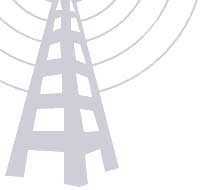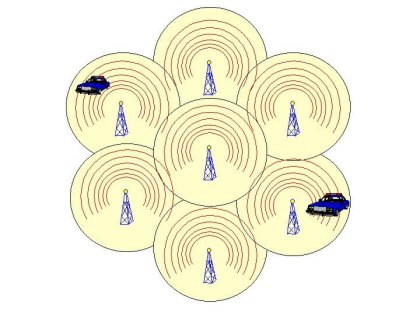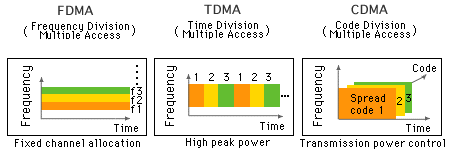

Technological Overview continued.
Cellular technology is based upon cells creating a network of coverage. The cells overlap, so that the coverage is continuous. The overlapping is used when devices move between cells, so it is possible for the calls to "handoff" between the cells.

By using new technology, more calls can be handled per cell site, which is a large benefit for cellular providers as they expand their services to greater numbers of new subscribers.
AMPS (Advanced Mobile Phone Service, aka analog) was the first generation of mobile technology, and is not digital based. Thus, one can pick up an analog call with a simple radio scanner. Second and third generation technologies are based upon the digital technologies of CDMA (code division multiple access) and TDMA (time division multiple access). See the table below for what technology each of the major US providers uses:
|
CDMA-based |
TDMA-based |
Verizon
Wireless (1xRTT) |
AT&T
Wireless (TDMA and GSM) |
Sprint
PCS (1xRTT) |
Cingular (TDMA and GSM) |
Alltel
(CDMA) |
Nextel
(iDEN) |
US
Cellular (CDMA) |
T-Mobile
(GSM) |
Cricket
(1xRTT) |
US
Cellular (TDMA) |
In the diagram below FDMA represents the separation of signals in AMPS, and CDMA/TDMA are representations of how each of the technologies uses their allotment of wireless bandwidth. As you will see, CDMA is the most efficient:

continue for an explanation of dBm and how dBm readings affect signal bars on cell phones...
return to: